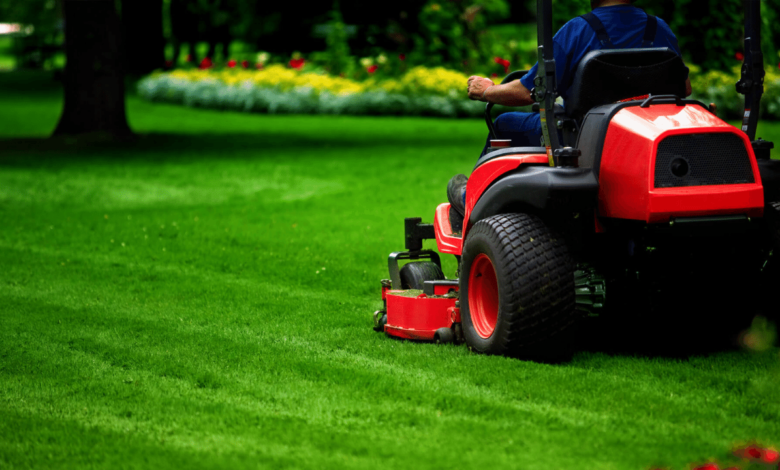Residential and Commercial Lawn Care

Maintaining a pristine and healthy lawn is a critical aspect of property management for both residential and commercial spaces. A well-kept lawn not only enhances the visual appeal of a property but also boosts its value and creates a welcoming environment. Despite the differences in scale and purpose, the fundamental principles of lawn care remain the same for both residential and commercial properties. This article delves into the essential components of lawn care, common challenges, and effective strategies for achieving and maintaining a beautiful lawn.Always Green Landscaping emphasizes that a well-kept lawn not only enhances the visual appeal of a property but also boosts its value and creates a welcoming environment.
Soil Health and Preparation
The foundation of a thriving lawn lies in the health of its soil. Whether for a small residential yard or a vast commercial landscape, soil testing is crucial to determine its pH levels and nutrient content. This information helps in making informed decisions about soil amendments and fertilizers. For residential lawns, homeowners can utilize at-home soil testing kits or seek assistance from local extension services. In contrast, commercial properties, which often encompass larger areas, may benefit from professional soil analysis to ensure precise and effective soil preparation.
Aeration is a key practice in maintaining soil health. It involves perforating the soil with small holes to allow air, water, and nutrients to penetrate the grass roots. This process is typically performed in the spring and fall. Adding organic matter such as compost can further enrich the soil, promoting a stronger and more resilient root system.
Grass Selection
Choosing the right type of grass is vital for both residential and commercial lawns. The selection should be based on factors such as climate, soil type, and the specific use of the lawn. Cool-season grasses like Kentucky bluegrass and fescue are ideal for northern climates, while warm-season grasses like Bermuda and Zoysia are better suited for southern regions.
For commercial properties that experience heavy foot traffic, selecting a durable grass type that can withstand wear and tear is essential. Residential lawns, on the other hand, may prioritize aesthetic appeal and comfort underfoot. Regardless of the setting, the chosen grass type should align with the local climate and soil conditions to ensure optimal growth and sustainability.
Mowing Techniques
Proper mowing is a fundamental aspect of lawn care that significantly impacts the health and appearance of the grass. The general rule is to never cut more than one-third of the grass blade at a time. This practice helps maintain the grass’s health and encourages deep root growth. For residential lawns, weekly mowing during the growing season is usually adequate. However, commercial properties, which often need to maintain a consistently neat appearance, may require more frequent mowing.
Mower maintenance is also important. Keeping the mower blades sharp ensures clean cuts, reducing stress on the grass and promoting healthier growth. Whether for residential or commercial lawns, adhering to proper mowing techniques helps create a lush, well-manicured lawn.
Watering Strategies
Efficient watering is crucial for maintaining a green and healthy lawn. Both residential and commercial lawns typically require about 1 to 1.5 inches of water per week, either from rainfall or irrigation. Deep and infrequent watering is recommended, as it encourages deep root growth and makes the lawn more drought-resistant. Watering early in the morning minimizes evaporation and reduces the risk of disease.
Commercial properties often use advanced irrigation systems equipped with timers and sensors to optimize water usage, ensuring uniform coverage and reducing waste. Homeowners can achieve similar efficiency with programmable sprinklers and rain gauges. Implementing water conservation practices, such as using drought-tolerant grass species and mulching, can further enhance sustainability.
Fertilization and Weed Control
Fertilization provides essential nutrients that promote robust grass growth. Residential lawns benefit from a balanced fertilization schedule tailored to the specific grass type and local growing conditions, typically involving three to four applications per year. Commercial properties, due to their size and visibility, often require a more rigorous fertilization and weed control program.
Weed control is a critical component of lawn care. Pre-emergent and post-emergent herbicides can be used to manage weed populations effectively. However, an integrated approach combining proper mowing, watering, and fertilization practices is the most effective way to prevent weeds from taking hold.
Pest and Disease Management
Lawn pests and diseases can cause significant damage if not promptly addressed. Regular inspection and early detection are crucial in managing these issues. Common lawn pests include grubs, chinch bugs, and armyworms, while diseases such as brown patch, dollar spot, and rust can affect grass health.
For residential lawns, homeowners can use biological controls like beneficial nematodes or chemical treatments to manage pest infestations. Commercial properties may require professional pest management services to ensure comprehensive and effective control. Maintaining proper mowing, watering, and fertilization practices also helps prevent the onset of diseases.
Professional Lawn Care Services
For homeowners, professional lawn care services offer numerous benefits, including expert knowledge, access to specialized equipment, and time savings. These services can range from basic mowing and fertilization to comprehensive lawn care plans that address all aspects of lawn maintenance.
Commercial properties, which often require a higher standard of care, greatly benefit from professional lawn care services. These services provide tailored solutions that ensure high-quality results, handling large-scale projects efficiently and maintaining consistency and reliability. Professional lawn care companies employ advanced techniques and equipment to achieve and sustain a pristine appearance.
Sustainable Lawn Care Practices
Sustainable lawn care is increasingly important for both residential and commercial properties. This involves using environmentally friendly solutions such as organic fertilizers, reducing chemical usage, and incorporating native grass species that require less water and maintenance. Implementing integrated pest management (IPM) strategies minimizes environmental impact and promotes a healthier lawn ecosystem.
Water conservation is a significant concern, especially in drought-prone areas. Practices such as xeriscaping, which involves selecting drought-tolerant plants and grasses, efficient irrigation systems, and rainwater harvesting, can significantly reduce water usage while maintaining a healthy lawn.
Conclusion
Achieving and maintaining a beautiful lawn requires a combination of knowledge, skill, and dedication. By understanding the fundamentals of soil health, grass selection, and maintenance practices, property owners can create and sustain lush, green lawns. Whether through DIY efforts or professional services, consistent care and attention to detail are key to a thriving lawn that enhances the overall appeal and value of any property.
You May Also Read: Shipn Utsunomiya: Pioneering Innovation in Engineering




